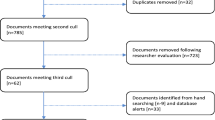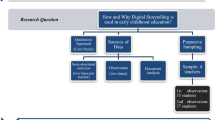Abstract
This paper explains the design, development and delivery of a curriculum-integrated dance programme across four primary schools in Auckland, New Zealand. Four teachers and their respective classes (101 children in total) were part of the programme. Each class participated in 18 dance sessions at their schools during school hours. The dance educator delivered the dance programme and collaborated with each class teacher for planning and implementation. Various topics related to science, mathematics, English and Māori culture were covered in accordance with the term focus of each class teacher. The core values from the New Zealand primary school curriculum and New Zealand arts curriculum were embedded in the dance programme. The applicability, transferability (to other participant groups), challenges (such as time and venue) and evaluation design associated with the dance programme are discussed. Teachers’ reflections are embedded with researcher observations as they describe the significance of the dance programme.







Similar content being viewed by others
Notes
SeeSaw is an online platform, where children share their learning through written reflections, videos or pictures amongst peers, teachers and parents.
References
Ashley, L. (2010). Teaching dance from contextual perspectives in the New Zealand curriculum: Concerns, dilemmas and opportunities in theory and practice. University of Auckland, Auckland.
Ashley, L. (2014). Essential guide to dance (3rd ed.). London: Hodder Education.
Ashley, L., & Anderson, E. (2002). Dancing the long white cloud. Wellington: Ministry of Education.
Beals, F., Hipkins, R., Cameron, M., & Watson, S. (2003). An evaluation of professional development to support the arts in the New Zealand curriculum. Wellington: Ministry of Education.
Bradley, K. K., & Szegda, M. (2012). The dance of Learning. In O. N. Saracho & B. Spodek (Eds.), Handbook of research on the education of young children. London: Routledge.
Buck, R. (2003). Teachers and dance in the classroom: So, do I need my tutu?. Dunedin: University of Otago.
Christa Mulker, G., & Liane, B. (2013). Boosting language skills of English learners through dramatization and movement. The Reading Teacher,67(3), 171.
Christa Mulker, G., Liane, B., & George, F. (2015). Effect of a performing arts program on the oral language skills of young English learners. Reading Research Quarterly,50(2), 185.
Clark, D. (2007). Classroom management challenges in the dance class. Journal of Physical Education, Recreation & Dance,78(2), 19–24. https://doi.org/10.1080/07303084.2007.10597968.
Contant, R. (2015). Just Dance! Boosting engagement and maximizing learning in a PE classroom. Physical & Health Education Journal,81(1), 30–32.
Dow, C. B. (2010). Young children and movement: The power of creative dance. Young Children,65(2), 30–34.
Giguere, M. (2015). Dance education action research: A twin study. Research in Dance Education,16(1), 16–32. https://doi.org/10.1080/14647893.2014.971231.
Greenfader, C. M., & Brouillette, L. (2017). The arts, the common core, and English language development in the primary grades. Teachers College Record,119(8), 1–38.
Gross, M. J. (2011). Bodies at school: Educating teachers to move. Columbus: The Ohio State University.
Hanna, J. L. (2015). Dancing to learn: The brain’s cognition, emotion, and movement. Lanham: Rowman & Littlefield.
Hong, C. M. Dance in the school curriculum of Aotearoa New Zealand. In S. W. Stinson, S.-Y. Liu, & C. S. Nielsen (Eds.), Dance, young people and change: Proceedings of the daCi and WDA Global Dance Summit. Taipei National University of the Arts, Taiwan, July 14th–20th, 2012.
Kalendra, D. R., & Cook, A. (2017). Implementing organisational change using action research in two Australian organisations. Action Learning and Action Research Journal,23(2), 71.
Kassing, G., & Jay, D. M. (2002a). Reciprocal style. Dance teaching methods and curriculum design (pp. 61–62). Chelsea: Sheridan books.
Kassing, G., & Jay, D. M. (2002b). Teaching strategies in the dance classroom. Dance teaching methods and curriculum design (pp. 59–62). USA: Sheridan books.
Kaufmann, K., & Dehline, J. (2014). Dance integration: 36 Dance lesson plans for science and mathematics. Champaign: Human Kinetics.
Koff, S. R., & Warner, M. J. (2001). Curriculum integration: Teaching in, through, and about dance in primary and secondary education. Journal of Dance Education,1(4), 142–147.
LaMotte, M. (2018). The integrated approach versus the traditional approach: Analyzing the benefits of a dance and transportation integrated curriculum. Journal of Dance Education,18(1), 23–32. https://doi.org/10.1080/15290824.2017.1336667.
Leandro, C. R., Monteiro, E., & Melo, F. (2018). Interdisciplinary working practices: Can creative dance improve math? Research in Dance Education,19(1), 74–90. https://doi.org/10.1080/14647893.2017.1354838.
Marsick, V. J., & Gephart, M. A. (2003). Action research: Building the capacity for learning and change. Human Resource Planning,26(2), 14–18.
McPherson, E. (2014). A collaboration in dance education between Montclair State University and Bradford School (K–5). Journal of Dance Education,14(2), 76–79. https://doi.org/10.1080/15290824.2014.848987.
Ministry of Education. (2002). Dance wall charts teacher support material. Retrieved Oct 15, 2019, from http://artsonline.tki.org.nz/Teaching-and-Learning/Secondary-teaching-resources/Dance/Reviewed-resources/Key-collection/Dance-Wall-Charts-Teacher-Support-Material.
Ministry of Education. (2005). Kiwi kids dance. Wellington: Learning Media.
Ministry of Education. (2006). Discovering dance–Teachers’ notes. Retrieved Oct 16, 2019, from http://artsonline.tki.org.nz/Teaching-and-Learning/Secondary-teaching-resources/Dance/Reviewed-resources/Key-collection/Discovering-Dance-Teachers-Notes.
Ministry of Education. (2007). The New Zealand curriculum for English medium teaching and learning in years 1-13. Wellington: Ministry Of Education.
Moore, C., & Linder, S. M. (2012). Using dance to Deepen Student Understanding of Geometry. Journal of Dance Education,12(3), 104–108. https://doi.org/10.1080/15290824.2012.701175.
New Zealand Ministry of Education (2000). The arts in the New Zealand curriculum. Wellington: Learning Media.
Renner, S. J. (2015). Generalist teacher’s self-efficacy beliefs for teaching dance. Dunedin: University of Otago.
Richard, M. (2013). Dance as a language of learning and a source of embodied knowledge. Physical & Health Education Journal,79(1), 6–10.
Richard, M., Martin, C., Charlebois, B., & Fielding, K. (2012). Igniting a collaborative practice. Paper presented at the Proceedings of the daCi and WDA Global Dance Summit, Taipei National University of the Arts (TNUA), Taiwan.
San Diego Unified School District Visual and Performing Arts (VAPA). https://www.sandiegounified.org/visual-and-performing-arts-vapa. Accessed April 29, 2018.
Silverstein, L. B., & Layne, S. (2010). What is arts integration. https://artsedge.kennedy-center.org/~/media/ArtsEdge/LessonPrintables/articles/arts-integration/KC-AE-Selected_Findings_CETA.pdf.
Simpson Steele, J., Fulton, L., & Fanning, L. (2016). Dancing with STEAM: Creative movement generates electricity for young learners. Journal of Dance Education, 16(3), 112–117.
Skoning, S. N. (2008). Movement and dance in the inclusive classroom. Teaching Exceptional Children Plus,4(6), 11.
Smith, F. (2009). Tucson schools enhance learning with the arts. http://www.edutopia.org/arts-opening-minds-integration. Accessed May 23, 2016.
Snook, B. (2012a). Dance in New Zealand primary schools: Moving forward toward a realisation of UNESCO’s aims for the arts. Paper presented at the Proceedings of the daCi and WDA Global Dance Summit, Taipei National University of the Arts (TNUA), Taiwan.
Snook, B. (2012b). Someone like us: Meanings and contexts informing the delivery of dance in New Zealand primary classrooms, University of Auckland, Auckland.
Snook, B., & Buck, R. (2014). Artists in schools: “Kick Starting” or “Kicking Out” dance from New Zealand classrooms. Journal of Dance Education,14(1), 18–26. https://doi.org/10.1080/15290824.2013.835052.
The Arts In Action: Dance and Drama Improving Student Achievement. http://www.uctv.tv/shows/The-Arts-In-Action-Dance-and-Drama-Improving-Student-Achievement-25436. Accessed June 5, 2016.
Werner, L. R. (2001). Using dance to teach math: The effects of a co-teaching arts integration model on teacher practice and student learning. Ph.D.: University of Minnesota, Ann Arbor.
Acknowledgements
The research team would like to thank all the schoolchildren, teachers, school principals and allied school staff who provided immense support and assistance for this research. We thank AUTEC for granting Ethics approval for this research.
Author information
Authors and Affiliations
Corresponding author
Additional information
Publisher's Note
Springer Nature remains neutral with regard to jurisdictional claims in published maps and institutional affiliations.
Rights and permissions
About this article
Cite this article
Sharma, G., Nikolai, J., Duncan, S. et al. Observing the Delivery of a Curriculum-Integrated Dance Programme Across Four New Zealand Primary Schools. NZ J Educ Stud 55, 29–47 (2020). https://doi.org/10.1007/s40841-019-00151-2
Received:
Accepted:
Published:
Issue Date:
DOI: https://doi.org/10.1007/s40841-019-00151-2




